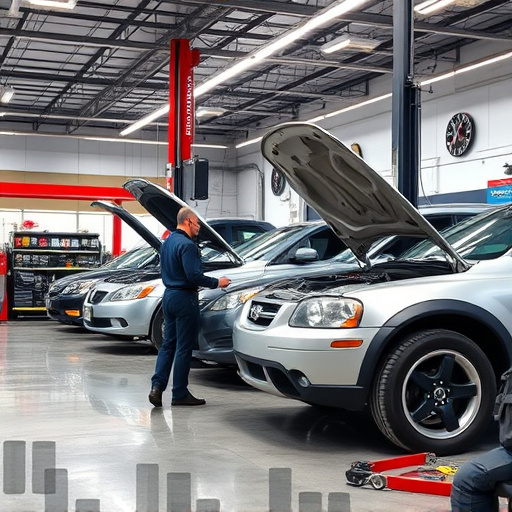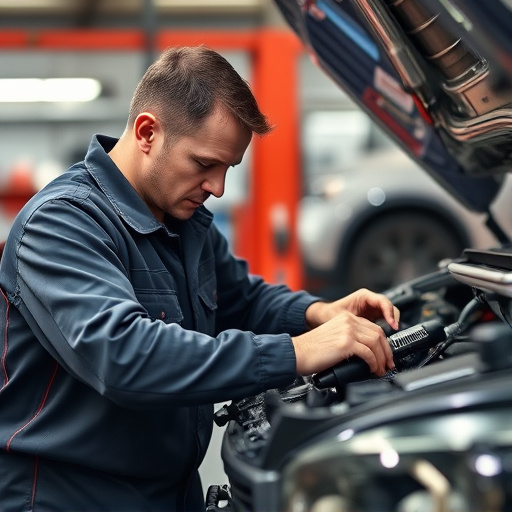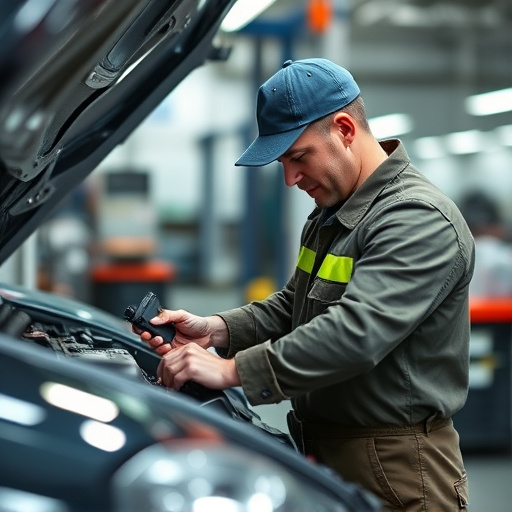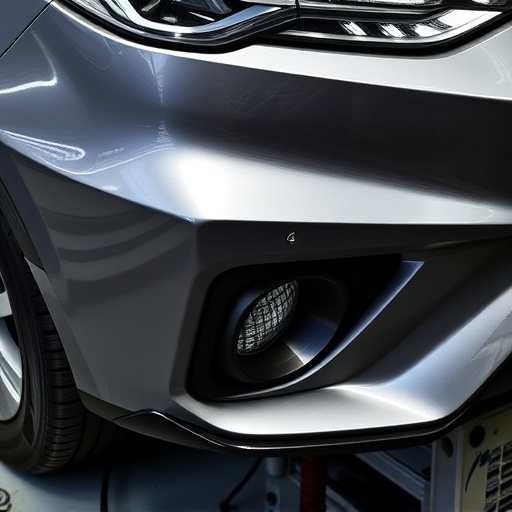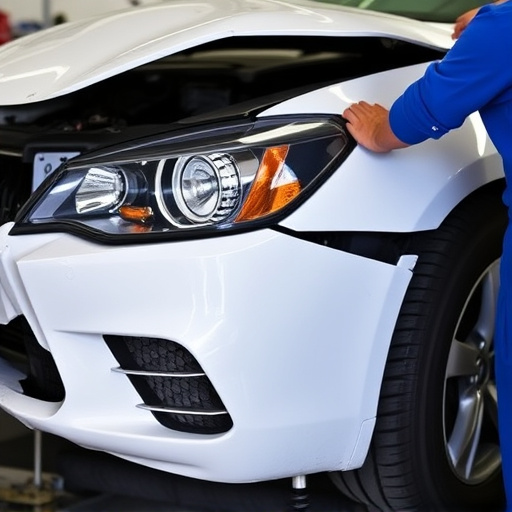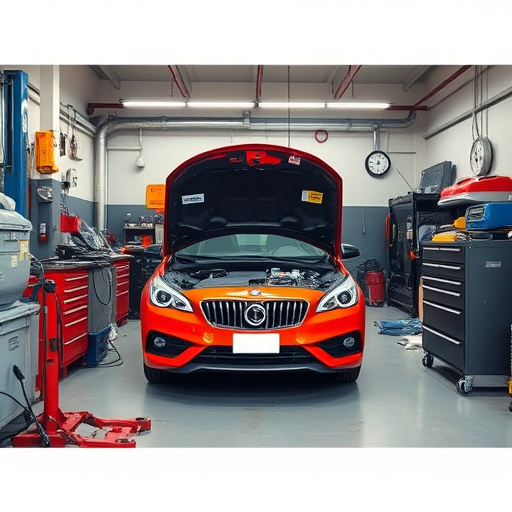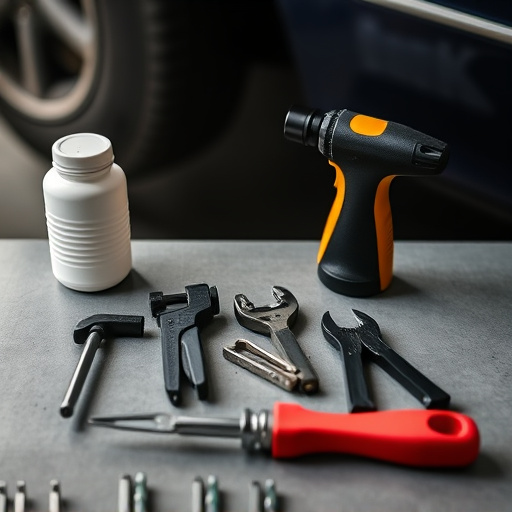Breakthroughs in material science are revolutionizing B-pillar replacement with lightweight yet robust advanced composites like CFRP, enhancing vehicle safety and fuel efficiency. Smart adaptive structures adjust to forces, streamlining collision repairs. Sustainability drives innovation, with eco-friendly materials and recycling techniques reducing carbon emissions, appealing to environmentally conscious customers and fostering a circular economy for classic car restoration businesses.
The future of automotive design is upon us, with significant shifts towards innovative B-pillar replacement technologies. This article delves into the cutting-edge advancements transforming vehicle safety and aesthetics. From material science breakthroughs offering lightweight alternatives to electric vehicle (EV) integration and smart design innovations, the industry is poised for a revolution. Additionally, we explore the growing sustainability focus, highlighting eco-friendly materials and recycling methods that ensure a greener future for B-pillar replacements.
- Advancements in Material Science for B-Pillar Alternatives
- Electric Vehicle Integration and Smart Design Innovations
- Sustainability Focus: Eco-Friendly Materials and Recycling Methods
Advancements in Material Science for B-Pillar Alternatives

The future of B-pillar replacement technologies is being reshaped by significant advancements in material science. Researchers are exploring innovative alternatives to traditional steel and aluminum, focusing on lightweight yet robust materials that can enhance vehicle safety and fuel efficiency. New developments include advanced composites, such as carbon fiber reinforced polymers (CFRP), which offer exceptional strength-to-weight ratios, making them ideal for B-pillar replacements in both passenger and commercial vehicles. These composite materials not only reduce weight but also provide improved crash performance, contributing to better overall vehicle dynamics.
In addition to composite materials, there’s a growing interest in smart, adaptive structures. These technologies can adjust their properties in real time, responding to external forces like impact or collision. In the context of autobody repairs and collision repair centers, this means faster and more effective repairs, as well as enhanced structural integrity post-accident. As material science continues to evolve, we can expect even more groundbreaking solutions for B-pillar replacement, further revolutionizing the automotive industry and setting new standards for safety and sustainability in collision repair.
Electric Vehicle Integration and Smart Design Innovations
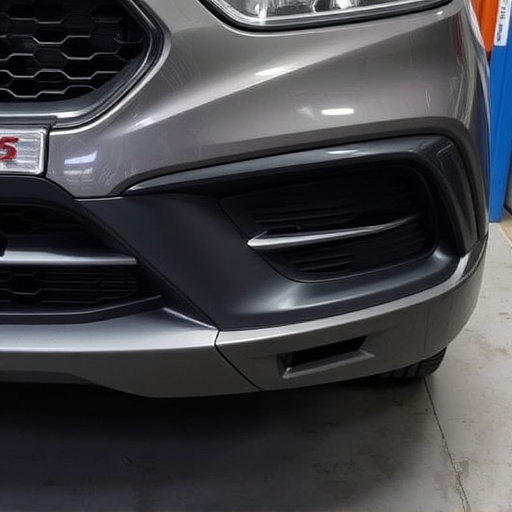
The future of B-pillar replacement technologies is being shaped by the relentless march towards sustainability and innovation. Electric Vehicle (EV) integration is at the forefront, with automakers exploring ways to seamlessly integrate B-pillar replacements that align with the overall vehicle’s electric architecture. These advancements promise not only enhanced safety features but also improved energy efficiency and reduced weight, addressing key challenges in EV design.
Smart design innovations are another driving force, pushing the boundaries of traditional bumper repair and fender repair methods. Advanced materials and modular designs are being employed to create lighter, more impact-resistant, and aesthetically pleasing vehicle bodywork. These developments not only facilitate faster and more cost-effective repairs but also contribute to a vehicle’s overall durability and longevity, ultimately enhancing customer satisfaction in terms of both safety and aesthetics.
Sustainability Focus: Eco-Friendly Materials and Recycling Methods
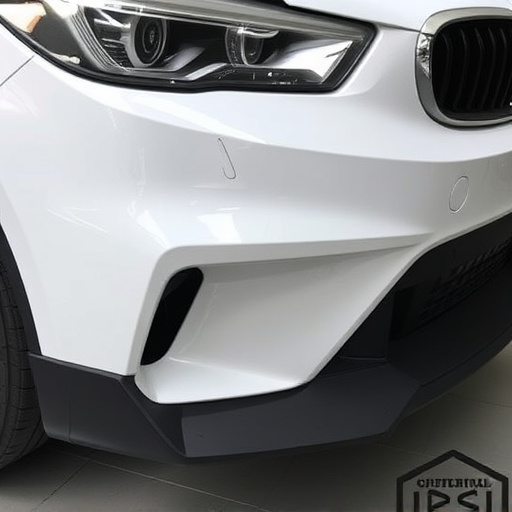
The automotive industry is undergoing a significant transformation, with a growing emphasis on sustainability and eco-friendly practices, particularly in the realm of B-pillar replacement technologies. As concerns over environmental impact intensify, manufacturers and auto repair shops are exploring innovative solutions to reduce waste and minimize the ecological footprint of vehicle repairs and classic car restoration processes. One prominent trend is the shift towards using eco-friendly materials for B-pillars and other structural components. These materials, derived from sustainable sources, offer excellent strength-to-weight ratios while significantly reducing carbon emissions associated with traditional production methods.
Additionally, recycling techniques are at the forefront of this green revolution. Advanced recycling methods allow for the recovery and repurposing of materials from old car parts, including B-pillars. This not only reduces the demand for new raw resources but also contributes to a circular economy where waste is minimized and resources are conserved. For auto repair shops engaging in classic car restoration, adopting these sustainable practices isn’t just an environmental responsibility; it’s a strategic move to appeal to environmentally conscious customers while ensuring long-term viability in a rapidly evolving market.
The future of B-pillar replacement looks promising, with significant advancements in material science paving the way for lighter, stronger, and more sustainable alternatives. Electric vehicle integration is driving innovation in smart design, ensuring safety without traditional pillars. As the focus on sustainability intensifies, eco-friendly materials and recycling methods will play a pivotal role in reducing the environmental impact of automotive manufacturing. These trends collectively suggest a greener, more efficient, and technologically advanced future for B-pillar replacement technologies.



